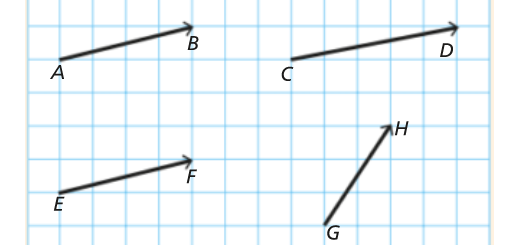Considere as equações
Números complexos: Infinito 12 A - Parte 3 Pág. 103 Ex. 64
Considere as equações: $$\begin{array}{*{20}{c}}
{{w^2} = 4}&{\text{e}}&{{w^4} = 16}
\end{array}$$
As equações dadas são equivalentes em $\mathbb{R}$? E em $\mathbb{C}$?
$$\begin{array}{*{20}{c}}
{{w^2} = 4}&{\text{e}}&{{w^4} = 16}
\end{array}$$
Resolvendo em $\mathbb{R}$:
$$\begin{array}{*{20}{l}}
{{w^2} = 4}& \Leftrightarrow &{\begin{array}{*{20}{l}}
{w = – 2}& \vee &{w = 2}
\end{array}}
\end{array}$$
$$\begin{array}{*{20}{l}}
{{w^4} = 16}& \Leftrightarrow &{\begin{array}{*{20}{l}}
{w = – 2}& \vee &{w = 2}
\end{array}}
\end{array}$$
Portanto, as equações são equivalentes em $\mathbb{R}$, pois possuem igual conjunto solução.
Resolvendo em $\mathbb{C}$:
$$\begin{array}{*{20}{l}}
{{w^2} = 4}& \Leftrightarrow &{{w^2} = 4\operatorname{cis} \left( 0 \right)} \\
{}& \Leftrightarrow &{\begin{array}{*{20}{l}}
{w = \sqrt 4 \operatorname{cis} \left( {\frac{0}{2}} \right)}& \vee &{w = \sqrt 4 \operatorname{cis} \left( {\frac{0}{2} + \frac{{2\pi }}{2}} \right)}
\end{array}} \\
{}& \Leftrightarrow &{\begin{array}{*{20}{l}}
{w = 2\operatorname{cis} \left( 0 \right)}& \vee &{w = 2\operatorname{cis} \left( \pi \right)}
\end{array}} \\
{}& \Leftrightarrow &{\begin{array}{*{20}{l}}
{w = 2}& \vee &{w = – 2}
\end{array}}
\end{array}$$
$$\begin{array}{*{20}{l}}
{{w^4} = 16}& \Leftrightarrow &{{w^4} = 16\operatorname{cis} \left( 0 \right)} \\
{}& \Leftrightarrow &{\begin{array}{*{20}{l}}
{w = \sqrt[4]{{16}}\operatorname{cis} \left( {\frac{0}{4}} \right)}& \vee &{w = \sqrt[4]{{16}}\operatorname{cis} \left( {\frac{0}{4} + \frac{{2\pi }}{4}} \right)}& \vee &{w = \sqrt[4]{{16}}\operatorname{cis} \left( {\frac{0}{4} + \frac{{4\pi }}{4}} \right)}& \vee &{w = \sqrt[4]{{16}}\operatorname{cis} \left( {\frac{0}{4} + \frac{{6\pi }}{4}} \right)}
\end{array}} \\
{}& \Leftrightarrow &{\begin{array}{*{20}{l}}
{w = 2\operatorname{cis} \left( 0 \right)}& \vee &{w = 2\operatorname{cis} \left( {\frac{\pi }{2}} \right)}& \vee &{w = 2\operatorname{cis} \left( \pi \right)}& \vee &{w = 2\operatorname{cis} \left( {\frac{{3\pi }}{2}} \right)}
\end{array}} \\
{}& \Leftrightarrow &{\begin{array}{*{20}{l}}
{w = 2}& \vee &{w = 2i}& \vee &{w = – 2}& \vee &{w = – 2i}
\end{array}}
\end{array}$$
Portanto, as equações não são equivalentes em $\mathbb{C}$, pois possuem diferentes conjuntos solução.


















